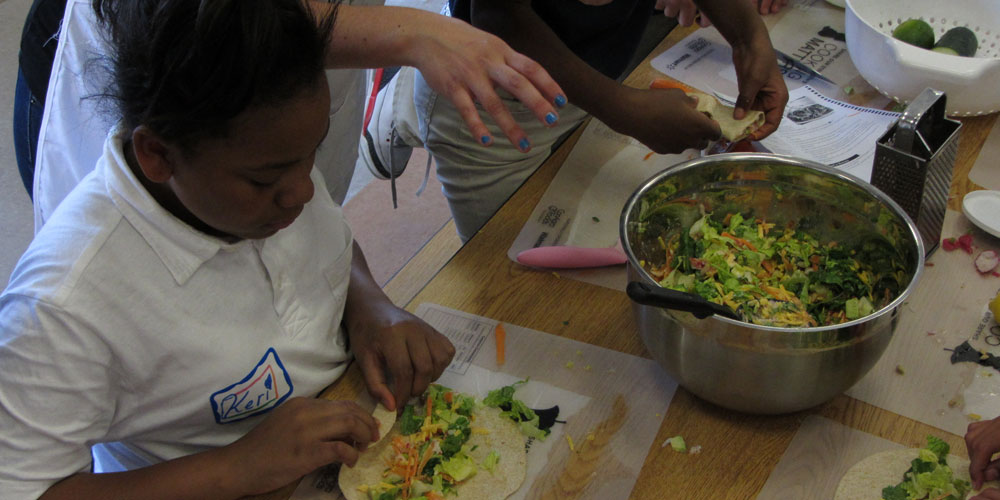When the kids in our class were unable to identify half the vegetables that we offered them in a tasting, it became more obvious why the help of the Cooking Matters Colorado program is so valuable. When they ate and enjoyed the same vegetables, I was glad I had volunteered to help teach.
Cooking Matters is a cooking education program of Share Our Strength, Strength.org, a national non-profit that is working to end childhood hunger in America by connecting children with the nutritious food they need to lead healthy, active lives. Colorado, where I’ve been attending a culinary nutrition program, is just one of thirty-seven states with Cooking Matters programs. Thanks to a school internship requirement, I had the opportunity to assist with teaching a 6-week session of the Cooking Matters “Cooking with Teens” program.
When I attended the required orientation session for volunteers, I was immediately impressed by the curricula that had been developed for different age groups. The teaching model was well developed, and the young trainers were effective at bringing to life the nature of the teaching experience we volunteers were about to take on. They warned us that we might be teaching and doing dishes in less than ideal circumstances because Cooking Matters conducts classes wherever they’re offered space – in church basements, school lunchrooms, and places with no kitchens at all. I was accepted as a volunteer and assigned to a middle school in northern Denver.
 Our class for young teens was team-taught by 3 volunteers – a cooking instructor, a nutritionist, and an assistant. Each session included a review of class etiquette, sanitation, knife safety, at least one tasting activity, a nutrition lesson, and preparation and eating of a simple meal.
Our class for young teens was team-taught by 3 volunteers – a cooking instructor, a nutritionist, and an assistant. Each session included a review of class etiquette, sanitation, knife safety, at least one tasting activity, a nutrition lesson, and preparation and eating of a simple meal.
The class included 12 students (grades 6-8) with sharp knives(!) and some electrical equipment (blenders, hots plates), so the need for supervision was essential. I enjoyed giving the kids positive reinforcement when they did things in a safe and productive way. Attention spans and juvenile amusement were constant detractors, but the call of their stomachs usually reeled them back in.
At the end of each class, students were given a take-home challenge and a little gift (measuring spoons, rubber spatulas, oven mitt) to encourage them to cook and to keep coming back to class. Students attending 4 out of 6 classes received a certificate of completion.
There is room for improvement in the Cooking Matters curriculum, but teaching begins at the level of the student and these kids knew very little about any food – not to mention healthy food. Sure, the USDA’s My Plate model is not cutting edge, but it’s not a bad place to start for someone who doesn’t know that McDonald’s isn’t a food group. And if a kid doesn’t recognize a vegetable, there’s little use in telling him what kind of oil he should be using to cook it in. One step at a time . . .
Today, graduation day, was our last of six 2-hour, after-school sessions. The students prepared and shared three different menus (each containing elements from the five food groups) that they had created in small groups. They had all gained confidence and they enjoyed eating and sharing the freshly prepared foods.
I was sorry to learn that Wisconsin does not yet have a Cooking Matters chapter. I may have to do something about that when I get back there in June! Nevertheless, I’m pleased to have learned from the teaching model and curriculum of such a successful program. It’s great to be one of more than 1,500 Cooking Matters volunteers teaching more than 12,000 participants to cook, nationwide, in 2012.


